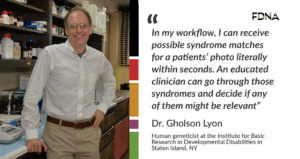Dr. Karen Gripp, MD, Chief of the Division of Medical Genetics at Nemours Children’s Health in Wilmington, has been at the forefront of groundbreaking research into what is now termed Fetal Fentanyl Syndrome—a novel condition observed in children exposed to fentanyl in utero in the context of a maternal opioid use disorder. This emerging syndrome is linked to opioid use during pregnancy, particularly fentanyl use. Fentanyl is a potent synthetic opioid that contributed to a significant portion of the opioid epidemic in the United States. In an exclusive interview, Dr. Gripp shared her research journey, the clinical findings, and the future implications of this discovery.
The Origins of the Study
The genesis of this research lies in the alarming increase in fentanyl use over the past six years. Fentanyl, often found in street drugs or prescribed medically, has been responsible for a surge in overdose deaths across the U.S. As a synthetic opioid, it is more potent than heroin and other natural opioids, making it highly dangerous, particularly when used illicitly.
Dr. Gripp first encountered a pattern in neonates presenting with physical abnormalities, including issues with growth, cleft palate, and distinctive facial features. These patients initially resembled cases of Smith-Lemli-Opitz Syndrome (SLOS), a metabolic disorder involving cholesterol biosynthesis. “The findings seemed similar, but genetic testing ruled out the presence of SLOS,” Dr. Gripp explained. This led her team to question whether the similarities could be tied to environmental factors, particularly opioid exposure.
Recognizing a New Syndrome
Upon further investigation, Dr. Gripp and her team discovered that the affected patients had one thing in common—their mothers had opioid use disorders, with many using fentanyl during pregnancy. “We started to theorize that fentanyl, a synthetic opioid, could be acting as a teratogen—an agent causing congenital abnormalities—leading to this distinct set of features and developmental issues,” she said.
Unlike other opioids such as heroin, which have been used for decades without causing widespread birth defects, fentanyl seemed to have a much more severe impact on fetal development. Dr. Gripp’s team theorized that this synthetic opioid might be responsible for these more dramatic effects, an idea that was initially met with scepticism.
The Clinical Features
To support their hypothesis, Dr. Gripp’s team documented the physical and developmental features of the children exposed to fentanyl in utero. These included cleft palate, abnormalities in hand and foot structure, and in males, genital abnormalities. A critical part of the study was the distinctive facial features shared by the affected children. “Facial development is a complex process influenced by genetic and environmental factors, and these children shared a pattern of facial abnormalities that we hadn’t seen before,” Dr. Gripp noted.
To objectively assess these facial features, the team employed the GestaltMatcher algorithm presented in the Face2Gene app, which compared the facial characteristics of affected children to controls, including patients with SLOS and Fetal Alcohol Syndrome (FAS). “We were able to show that the children with fentanyl exposure had more similarities to each other than to those in the control groups, providing a strong case for a novel syndrome,” Dr. Gripp shared.
Face2Gene, developed by FDNA, is a facial analysis ai tool that uses machine learning to compare the facial features of patients with known genetic syndromes to those of undiagnosed patients.

Facial photographs of Individuals 1-6 (A-F) as used in the GestaltMatcher analysis. Genetics in Medicine Open, 2023.
Proving Fentanyl as the Cause
The next step was to prove that fentanyl exposure was responsible for these abnormalities. In vitro studies, performed through a collaboration with the Korade lab in Nebraska, demonstrated fentanyl’s impact on cholesterol metabolism, mimicking but not exactly replicating the effects seen in SLOS. “This provided crucial evidence that fentanyl is capable of interfering with fetal development in a way that can lead to these physical and developmental problems,” Dr. Gripp stated.
Next Steps in Research
While the research so far has been promising, Dr. Gripp emphasized that there is much more to be done. Her team is currently enrolling additional patients to further validate their findings. They are also exploring whether certain genetic predispositions—such as being a carrier of a variant affecting cholesterol metabolism—might increase the risk of having a child with Fetal Fentanyl Syndrome.
The research also raises questions about the spectrum of severity, with some children potentially presenting with milder symptoms, similar to what is seen in Fetal Alcohol Syndrome. “We have focused on the most severe cases to allow the delineation of this new syndrome, but it is likely that there are children with milder effects of fentanyl exposure that we have not yet identified,” Dr. Gripp explained.
Public Health Implications
When asked about the broader implications of her research, Dr. Gripp emphasized the importance of addressing the opioid use epidemic. “This issue isn’t just about pregnancy—it’s about helping people overcome opioid use disorder, particularly fentanyl abuse,” she said. “By the time a pregnancy is recognized, it’s often too late to prevent fetal exposure, so the focus needs to be on preventing and treating opioid use disorders in general.”
Dr. Gripp’s research has opened a new frontier in understanding the dangers of fentanyl, especially for pregnant women and their unborn children. As more cases of Fetal Fentanyl Syndrome are reported and studied, the medical community will gain a clearer picture of how this potent synthetic opioid disrupts fetal development. This groundbreaking work not only highlights the need for better public health strategies to combat opioid addiction but also provides new insights into the risks that fentanyl poses to future generations.
For more information or to inquire about patient enrolment in ongoing studies, Dr. Gripp can be contacted directly via email. Her team continues to seek more cases and collaborations to further define and understand this emerging syndrome.



